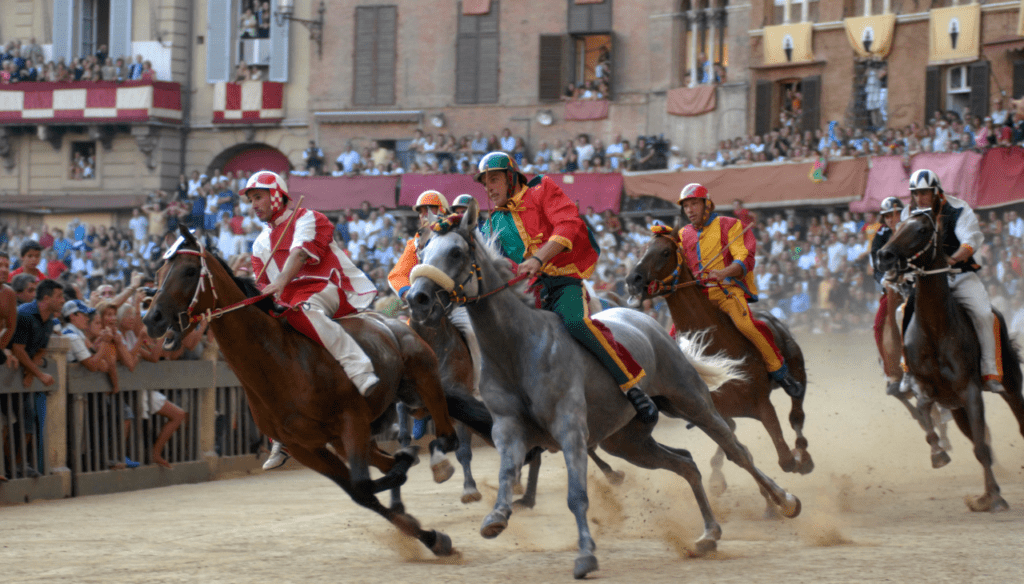
Two times each summer, the distinctive flags and colors of rival neighborhoods flood Siena, Italy’s Il Campo. The excitement in the medieval town square is palpable, as masses of residents and visitors squeeze in to cheer on Italy’s most famous horse race – the Palio di Siena. This event is much more than just a horse race, though. It is the culmination of days of traditional festivities which date back to medieval times.
History of Siena
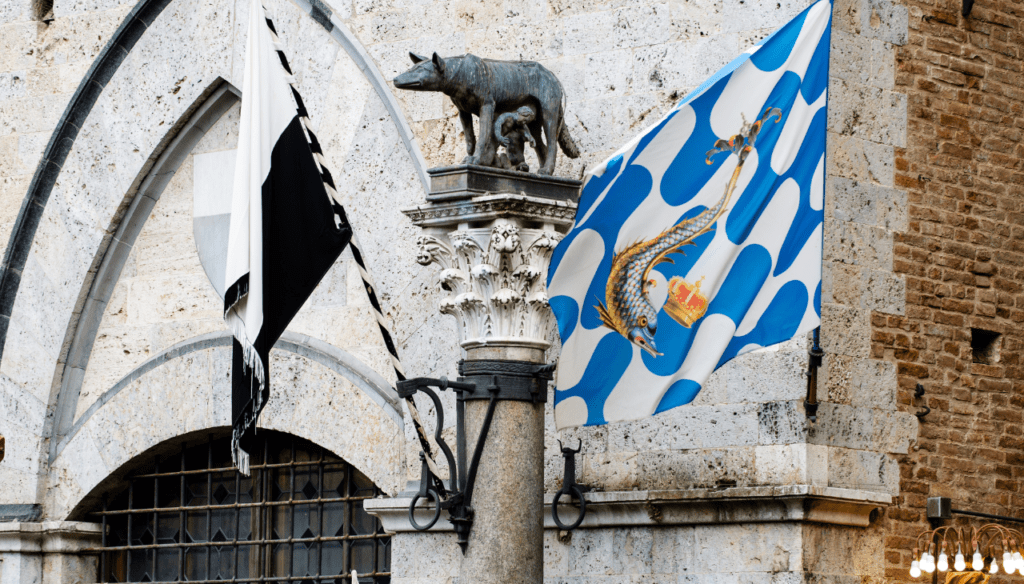
Legend says that the sons of Remus (of twins Romulus and Remus who founded Rome) founded Siena. We do know for a fact that it was a Roman outpost in 30AD and during the Middle Ages, great artists flourished there. These artists contributed to the beautiful gothic architecture, which enjoys a remarkable degree of preservation today. As such, UNESCO inscribed the historic center of Siena with Outstanding Universal Value as “the embodiment of a Medieval city.”
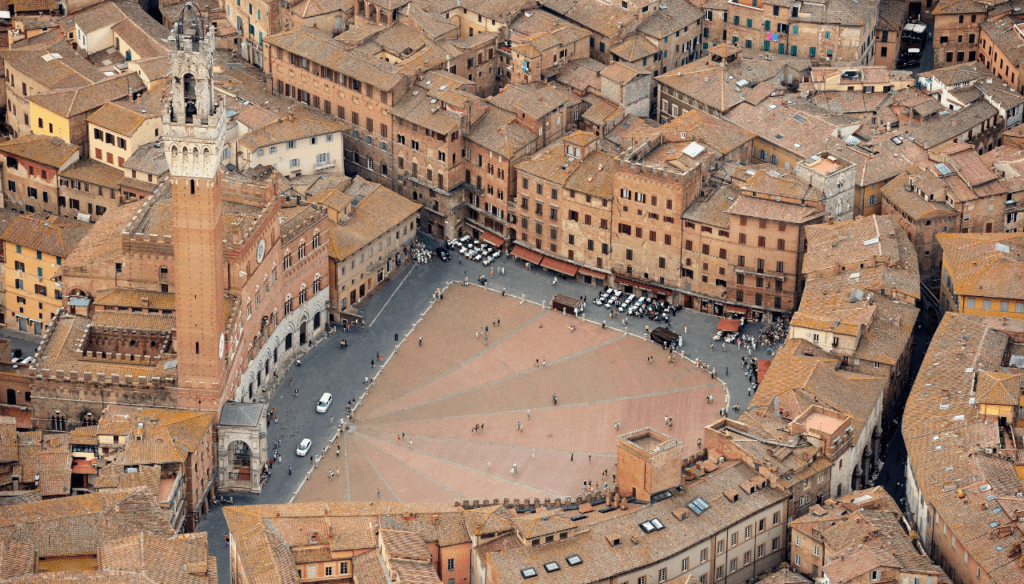
A seven-kilometer fortified wall surrounds the city, and many medieval palaces, churches, and fountains survive within the walled city. The central square of the old city is the fan-shaped Piazza del Campo where the Palio di Siena happens on July 2 and August 16 each year. 17 historic neighborhoods, or contrade, surround Il Campo.
Festivities Before Palio di Siena
The Palio is a passionate event for the Sienese. It takes place over four days and there are many rules. On the first day called the Tratta, the contenders are determined, and horses are assigned. Only 10 of the 17 contrade compete. These are the seven who did not complete the same running the previous year, plus three chosen by drawing. Contrade choose their jockeys, but the horses are assigned by drawing lots only four days before the race.
The ground of Il Campo gets packed with clay to prepare the racetrack, and mattresses line the walls of ancient buildings at the sharpest turns. Horses and jockeys run six heats before the main event, one each morning and one each evening over the next three days.
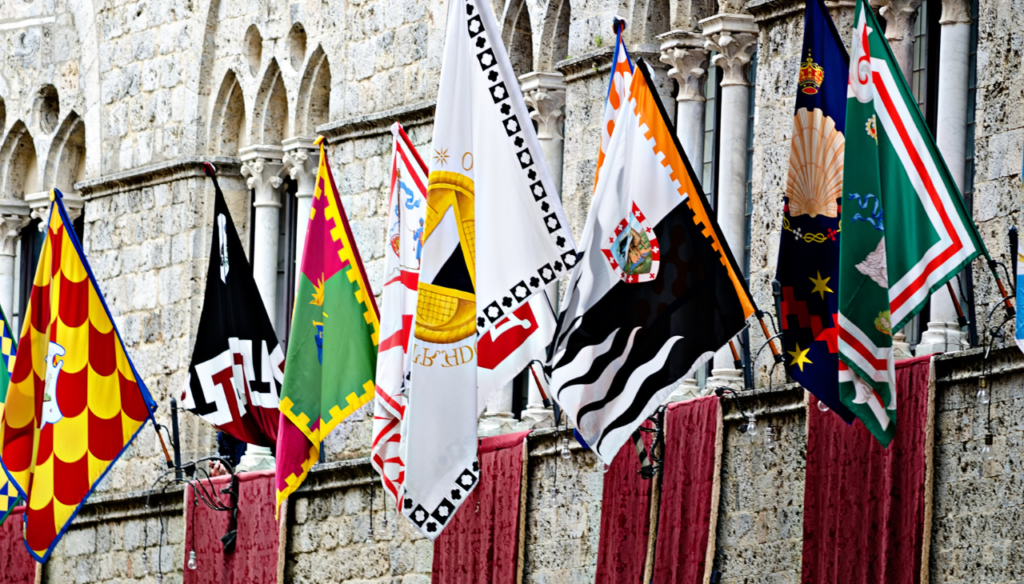
Each contrade has its own flag with an animal symbol. Flags fly proudly and residents wear their contrade colors year-round in each district, but as the Palio nears, nearly everyone flaunts the colors of their tribe. Each year a different artist designs and paints the Drappellone, or large drape, as the Palio di Siena prize. The winning contrade hangs it in their contrade museum.
Il Palio Main Event
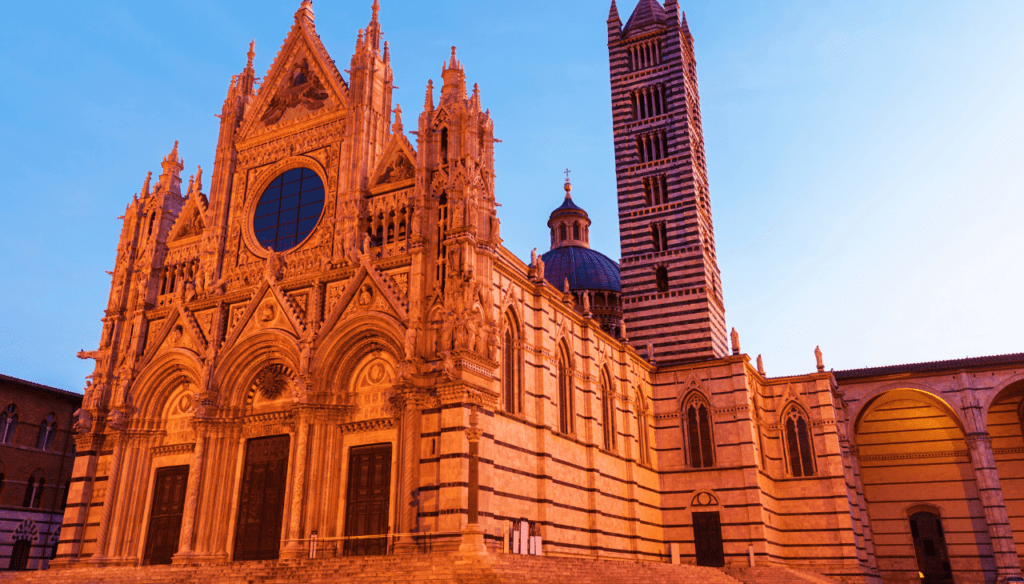
On the final race day, the city’s excitement reaches a crescendo. Early in the morning, the bishop celebrates the Messa del fatino, or mass for the jockeys, and then the last trial run happens. Of course, the horses themselves need a blessing, too, so each horse goes inside its contrade’s church for consecration. Locals consider it good luck if the horse leaves a bit of manure in the church!
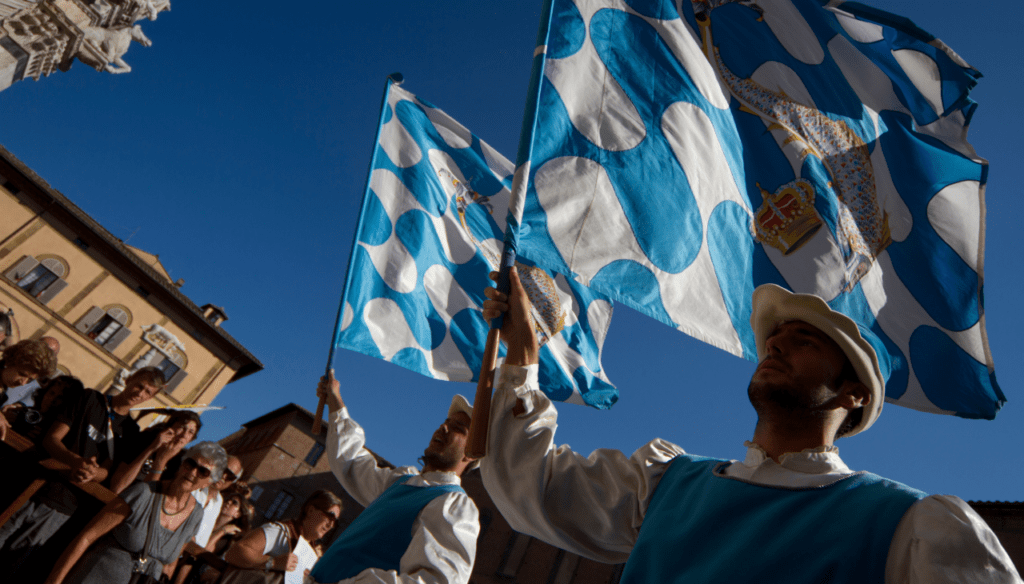
A massive parade winds through the city with hundreds of people in medieval costumes. When the parade finally reaches the Piazza del Campo, a firecracker heralds the arrival of the horses.
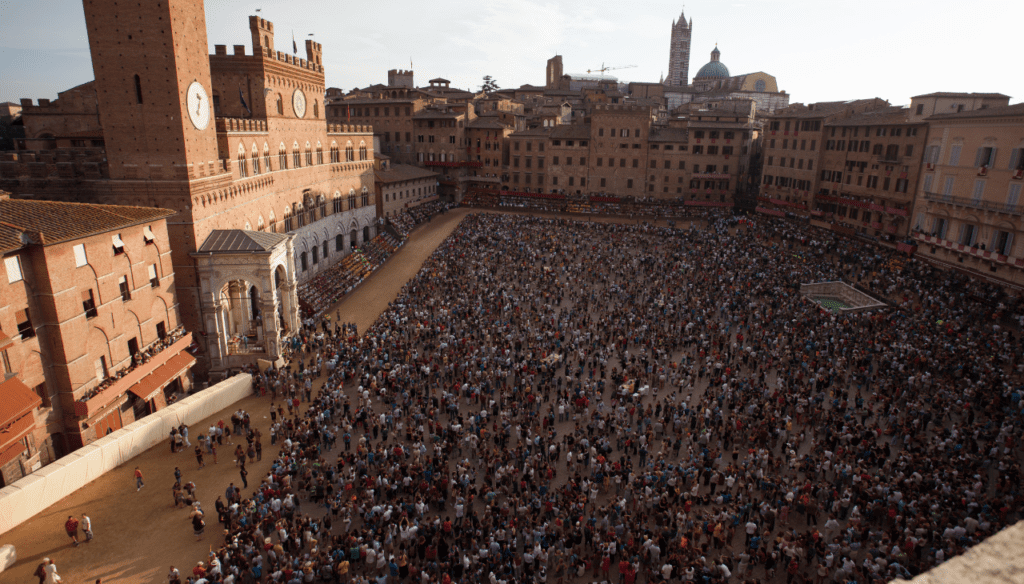
The crowd packs into every square inch that isn’t Palio race track. Of course, the best viewing is from the windows and balconies of the medieval buildings overlooking Il Campo, but you have to have insider connections to gain private access. Travel Maestro tip: You might find yourself surprised at the connections Covington vacation advisors have! Tickets are sold for bleacher seats and some balconies, or you can squeeze into the center of the racetrack for free standing room only. Travel Maestro tip: You must be there early in the morning for a spot on the rail, otherwise you won’t see much of the race. Secondly, you should know that no public toilets exist in the square.

As the colorfully clad bareback riders line up in their assigned positions, the feverish excitement of thousands quiets in expectation. When the rope drops, the free-for-all race is on and there are no rules except that the horse must run three laps. The jockey doesn’t even have to finish the race. The first horse to finish – with or without a rider – wins. For the next 90 seconds, the passionate crowd goes out of its mind cheering for their contrade.
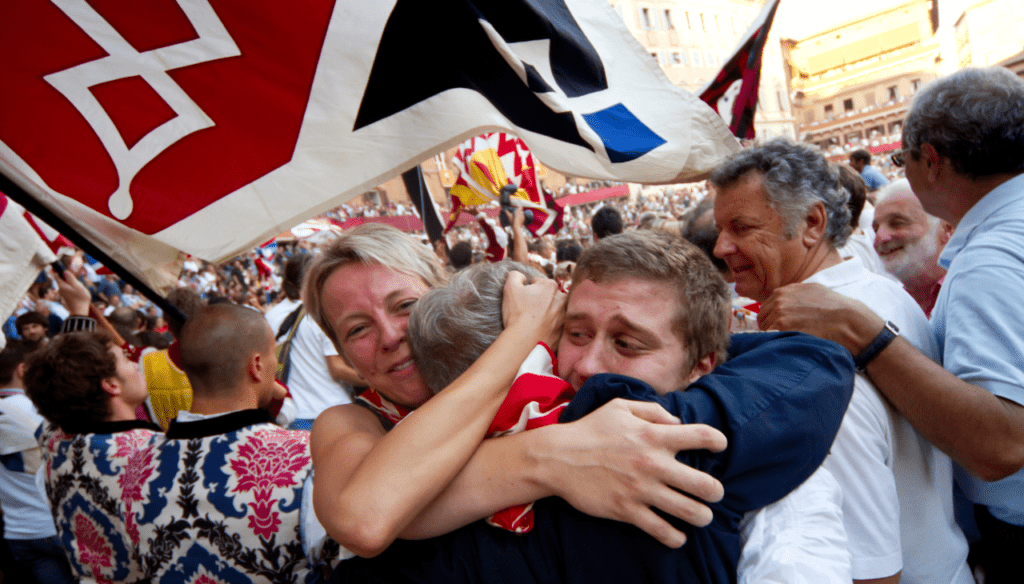
The winners are ecstatic and will celebrate all night. The losers, well, there’s always another Palio, as there has been for 500 years.
To be part of the living tradition of the Palio di Siena, contact a Covington vacation advisor for help arranging your trip.






Leave a Reply